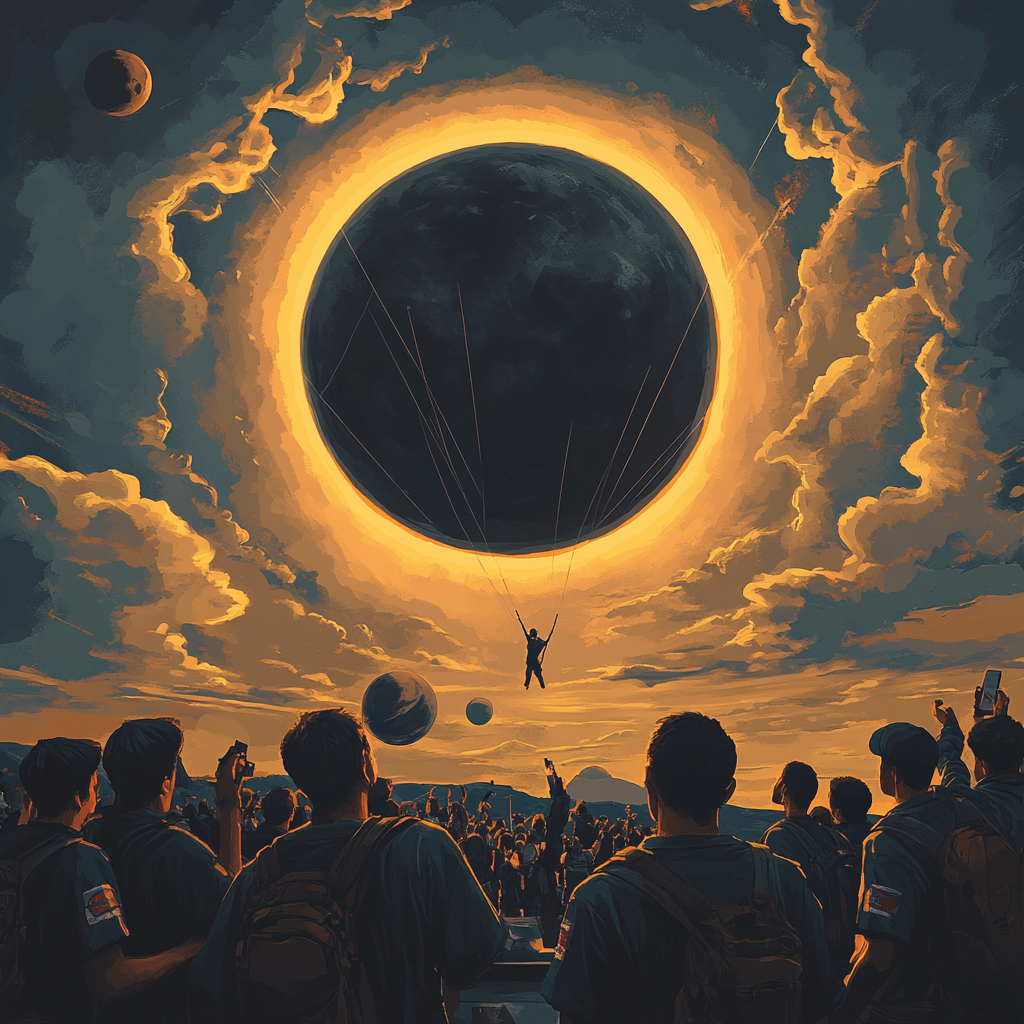
Student Research Validates Models of Atmospheric Wave Dynamics
In a remarkable turning point for atmospheric science, a team of college students from several U.S. universities has put a long-believed theory to the test and confirmed that solar eclipses can indeed trigger atmospheric gravity waves. This breakthrough has been made possible through a truly inspiring initiative known as the Nationwide Eclipse Ballooning Project (NEBP), which had NASA backing its astronomical ambitions. What’s fascinating is how these budding scientists turned skywatching into solid data, ultimately adding a shiny feather to the cap of atmospheric research and weather prediction.
The Nationwide Eclipse Ballooning Project (NEBP)
Now, let’s lay the scene: students from Plymouth State University, the State University of New York (SUNY) Albany, and SUNY Oswego were stationed strategically along the path of an annular solar eclipse that took place on October 14, 2023. Sounds glamorous, right? It wasn’t just about basking in the fine light show from our celestial neighbor, however. Instead, these bright minds put on their scientific hats and prepared for something far more substantial. The entire snafu was orchestrated by the Montana Space Grant Consortium, with generous support from NASA and the National Science Foundation, turning what could have been a lazy Sunday into a day of scientific triumph and discovery.
Measuring Atmospheric Gravity Waves
As the moon lined itself up with the sun, these student teams sent weather balloons soaring into the sky. Each balloon was like a mini-laboratory, carrying instrument packages known as radiosondes. These nifty gadgets were collecting atmospheric data—temperature, location, humidity, wind direction, wind speed—every second during their ascent. The balloons danced with the breeze, sending back vital information to the research teams on the ground, who were probably just praying that their balloons didn’t get too frisky and float off to who-knows-where.
The Breakthrough in New Mexico
Among the many locations involved in this cosmic experiment, a "supersite" in Moriarty, New Mexico, emerged as the VIP of the event. The calm weather and flat terrain made it an ideal spot for gathering data without the interference of pesky mountains, which could stir up gravity waves of their own. This team was on a mission, releasing balloons every 15 minutes while cupping their hands around their ears and waiting to hear the atmospheric whispers. What was highly anticipated turned into delightful reality when they finally collected data that bore the unmistakable signature of atmospheric gravity waves generated by the eclipse. Go team!
Data Analysis and Excitement
Once the weather balloons did their thing and returned to Earth (which let’s be honest, is part of the plan), the real magic began. Jie Gong and a group of eager graduate students turned into data detectives, piecing together their findings. “We put all the data together according to time, and when we plotted that time series, I could already see the stripes in the signal," Gong exclaimed. If you think that data analysis sounded like watching paint dry, think again! The buzz among the team was electric. This discovery was testament to the endless hours of preparation, planning, and teamwork—the kind of camaraderie you find in epic movies, but here it was all about the science.
Implications for Weather Forecasting and Climate Studies
So what does this discovery mean beyond the initial thrill of success? The implications for weather forecasting and climate studies are enormous, my friends. By understanding how atmospheric conditions respond during these celestial events, scientists can finetune climate models and enhance the accuracy of weather predictions. Angela Des Jardins, the Director of the Montana Space Grant Consortium, hit the nail on the head when she said, "Understanding how the atmosphere reacts in the special case of eclipses helps us better understand the atmosphere, which in turn helps us make more accurate weather predictions and, ultimately, better understand climate change.” Boom! It's not every day that a solar eclipse sheds more light—not just visually—but scientifically.
Student Learning and Teamwork
Let’s take a moment to applaud the educational value of this project. While contributing to significant scientific knowledge, the NEBP also offered a rich tapestry of learning experiences for the participating students. From launching weather balloons to tackling logistical challenges, each student honed their teamwork skills alongside their scientific acumen. Eric Kelsey, a Research Associate Professor at Plymouth State, put it beautifully: "The students learned a ton through practicing launching weather balloons. It was a huge learning curve. They had to work together to figure out all the logistics and troubleshoot. It’s good practice of teamwork skills.” And isn’t that what education should be about? Combining knowledge with practical, hands-on experiences that mold future leaders.
The Bigger Picture
In the grand scheme of things, the discovery of atmospheric gravity waves linked to solar eclipses is more than a feather in a cap; it’s an opening to entire new fields of inquiry. If maverick college students can delve into the unknown and achieve what experts have long speculated, imagine what might be possible with more support, more resources, and more collaborative efforts across disciplines! Science is a living organism; it thrives on fresh ideas and courageous minds willing to question the status quo.
So, as we stand on the precipice of ever-evolving scientific exploration, let’s give a round of applause to these college students and their mentors, who have boldly gone where many older scientists have merely theorized. This research not only pushes the boundaries of atmospheric dynamics but also ignites a fire of curiosity among the next generation of scientists.
Let’s Keep the Momentum Going!
Feeling the itch to learn more about transformative scientific discoveries and educational projects? Want to join the movement of informed curiosity? Don’t let curiosity fizzle out like a forgotten candle. Stay in the loop, keep your mind sharp, and subscribe for more updates on exciting scientific endeavors!
Want to stay up to date with the latest news on neural networks and automation? Subscribe to our Telegram channel: @channel_neirotoken

